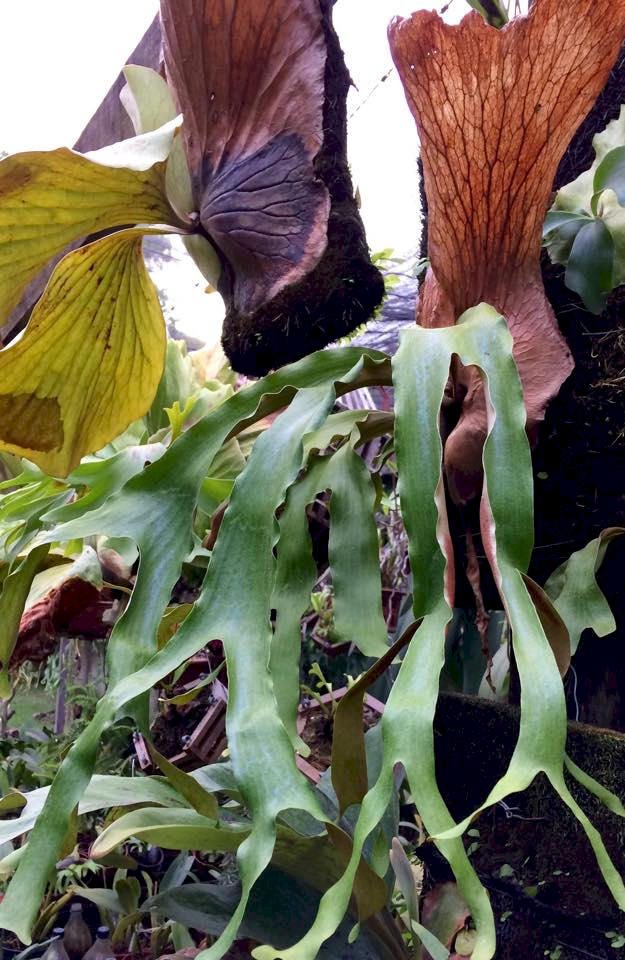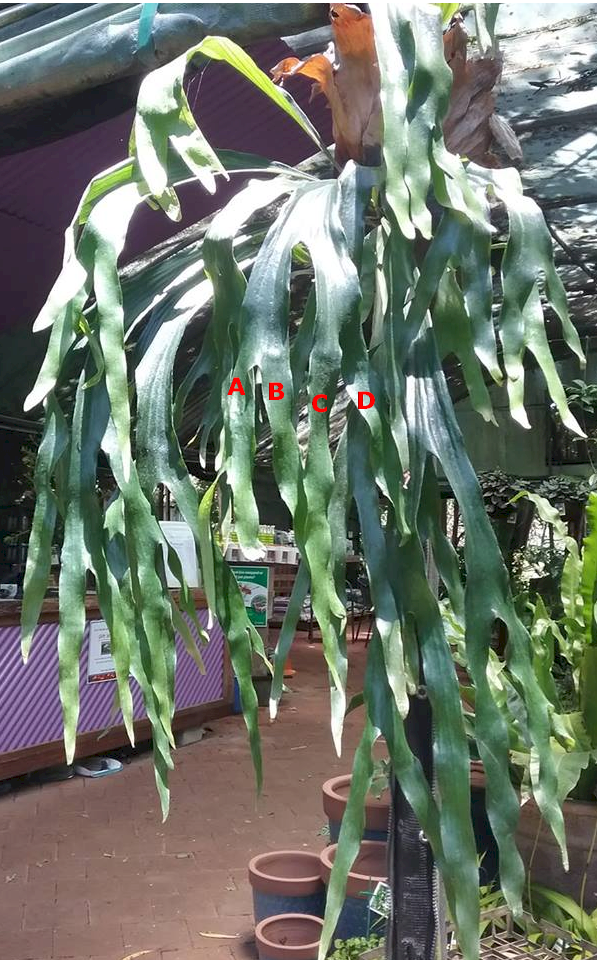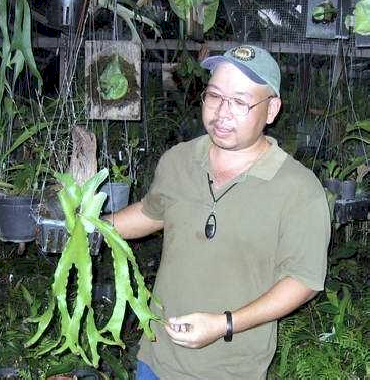|
Platycerium Quadridichotomum Branched fertile fronds with four tips
|
|
The P. quadridichotomum is from Madagascar and considered a
difficult species to grow. Charles Alford of RareFerns.com
states P. quadridichotomum experience a lengthy dry season,
during which the shields are crispy and brown. The fertile
fronds roll tightly, and also appear dead. When the rains come,
the plant resumes growth, and can be a lush, and emerald green color. The name describes the fertile fronds
which often branch the number of times it takes to form four tips.
For the hobbyist this is probably the rarest and least understood
species of Platycerium. The fertile fronds hang down. Their edges are usually wavy. Their upper surface may be hairy in bright light. The lower surface is densely covered with tan hairs. The spore patch is dark brown, and located in the area of the second frond division, similar to P. andinum. During the dry periods, the species goes dormant and the shield fronds rolled up lengthwise like tubes. This puts their protected hairy undersides towards the outside, and decreases surface area. The shields are tall for such a small plant. They spread outward at the tip, and show no lobes. During the wet season, they tend to be emerald green. During the dry season, they go dormant and turn brown, appear dead. The shield fronds are not thick corky shields that sore water. Its shields are more like those of P. stemaria. The number of shield fronds formed varies greatly from year to year. On Madagascar, P. quadridichotomum grows on the island's drier western side. Scattered there are humid valleys where this species must be native. Even in these valleys, there are dry periods which may last six months and the species goes dormant. Then the rains come and the species resumes growth and becomes emerald green. In the forest, P. quadridichotomum often grows on limestone rocks than on trees. No other platycerium grows in this region of Madagascar. Roy Vail feels that in cultivation, giving P. quadridichotomum these long dry periods is not practiced. It is not clear if it actually requires these dry periods, or is only able to survive them. Charles Alford says the P. quadridichotomum does not grow well in Florida. He feels his nicest plants were well watered all year and not given a dry dormancy period.
P. quadridichotomum are rare, small, unique, and little understood, as seen in this photo from Dave's Garden on left. This P. quadridichotomum is growing in a rare plant collection in Bangkok, Thailand.
|
|
Mahajanga Madagascar is the largest city in western Madagascar where P. quadridichotomum grow. Rain fall in Mahajanga, averages less than 0.1 inches in May through October with almost zero rain in June. Annually Mahajanga receives 58 inches of rain on average with January the wettest month. The differences between dry and wet seasons are extreme and P. quadridichotomum appears to have hardened to the climate with unique traits.
|

This photo is taken from Facebook - Planet Platycerium and the photographer is Platycerium Brazil. Notice the color contrast between the fertile fronds and the brown shield fronds. There appears to be what might be a Platycerium elephantotis in the background. |

I found this photo on left on Facebook. It was not properly identified but it looks like the best specimen of a Platycerium quadrichotomum I have never seen. Notice how well developed the P. quadrichotomum is with so many fertile fronds. Notice how the fronds fork once then each fork forks again causing 4 long fingers. I have labeled them A B C D, That is hw the P. quadrichotomum got its name. |
|
|


